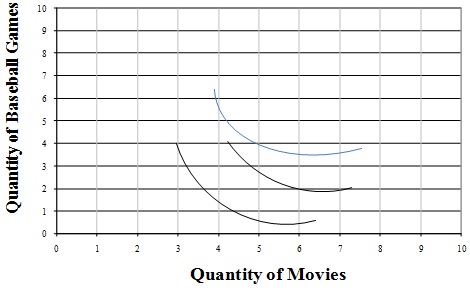Reference no: EM131019909
Homework # 3
1. Consider the market for computer printers. Domestic demand for printers in a small country is given by the equation p= -2qd+100. Domestic supply is given by the equation p = 3qs. The world price of printers is $30.
a. Assume that this economy is closed to world trade. Calculate the equilibrium quantity, price, consumer surplus, and producer surplus in the market for computer printers.
b. Now assume that this economy is open to world trade. How many units will they import or export? Calculate the equilibrium quantity, price, consumer surplus, and producer surplus in the market for computer printers if this economy opens to trade. Is there a deadweight loss when this economy opens to trade?
c. Continue to assume that this economy is open to world trade, and that the government enacts a tariff of $12 per computer printer. Calculate the new equilibrium quantity, price, consumer surplus, producer surplus, and the deadweight loss in the market for computer printers when this economy imposes this tariff.
d. Instead of the tariff, suppose that the government implements a quota of 15 computer printers. Calculate the new equilibrium quantity, price, consumer surplus, producer surplus, and the deadweight loss in the market for computer printers when this country imposes the quota.
e. What do your answers in part (c) and (d) indicate about the relative effectiveness of tariffs and quotas?
f. If the world price of computer printers equaled $65 instead of $30, how many units would this country import or export? In this case would the imposition of a tariff or quota have any effect on the market for computer printers in this country?
2. Jerry is at a picnic. The following table gives the total utility that Jerry gets from eating free cheese at the picnic.
|
Chunks of Cheese
|
Total Utility
|
Marginal Utility
|
|
0
|
0
|
|
|
1
|
5
|
|
|
2
|
11
|
|
|
3
|
17
|
|
|
4
|
20
|
|
|
5
|
22
|
|
|
6
|
21
|
|
a. What is his marginal utility after eating each piece?
b. How many chunks of cheese would Jerry choose to eat?
Suppose there is also free ice cream at the picnic. The following table gives the marginal utility of eating ice cream. Calculate the total utility of eating each unit of ice cream.
|
Ice Cream
|
Total Utility
|
Marginal Utility
|
|
0
|
|
0
|
|
1
|
|
5
|
|
2
|
|
4
|
|
3
|
|
3
|
|
4
|
|
2
|
|
5
|
|
1
|
|
6
|
|
-2
|
c. Suppose now that Jerry had to pay for the cheese and ice cream. Each chunk of cheese costs $3 and each ice cream costs $4. Jerry's income equals $20. How many chunks of cheese and ice cream would Jerry consume?
3. Tom likes to play squash and tennis. He enjoys a game of squash twice as much as a game of tennis.
a) Draw a few indifference curves for Tom with tennis games on the y-axis and squash games on the x-axis.. (Consider 1 game of squash to be a perfect substitute to 2 games of tennis.)
b) Suppose that Tom has $12 per week to spend on playing squash or tennis. It costs $4 to play a game of squash and $3 to play a game of tennis at the local gym.
i) Draw Tom's budget line and find the equation of the line.
ii) How many games of squash and tennis will Tom play in a week?
4. The left shoe is a perfect complement to the right shoe. Suppose you could buy left and right shoes separately. Draw a few indifference curves for left and right shoes with left shoes on the y-axis and right shoes on the x-axis.
5. Some of Elmer's indifference curves are drawn in the diagram below. Suppose Elmer has $40 to spend on baseball games and movies. Suppose a baseball game costs $8 while a movie ticket costs $4.
Draw Elmer's budget line. How many movies and baseball games does Elmer go to watch?
Suppose the price of a baseball game goes down to $5. Draw the new budget line. How many baseball games and movie does Elmer watch now?
